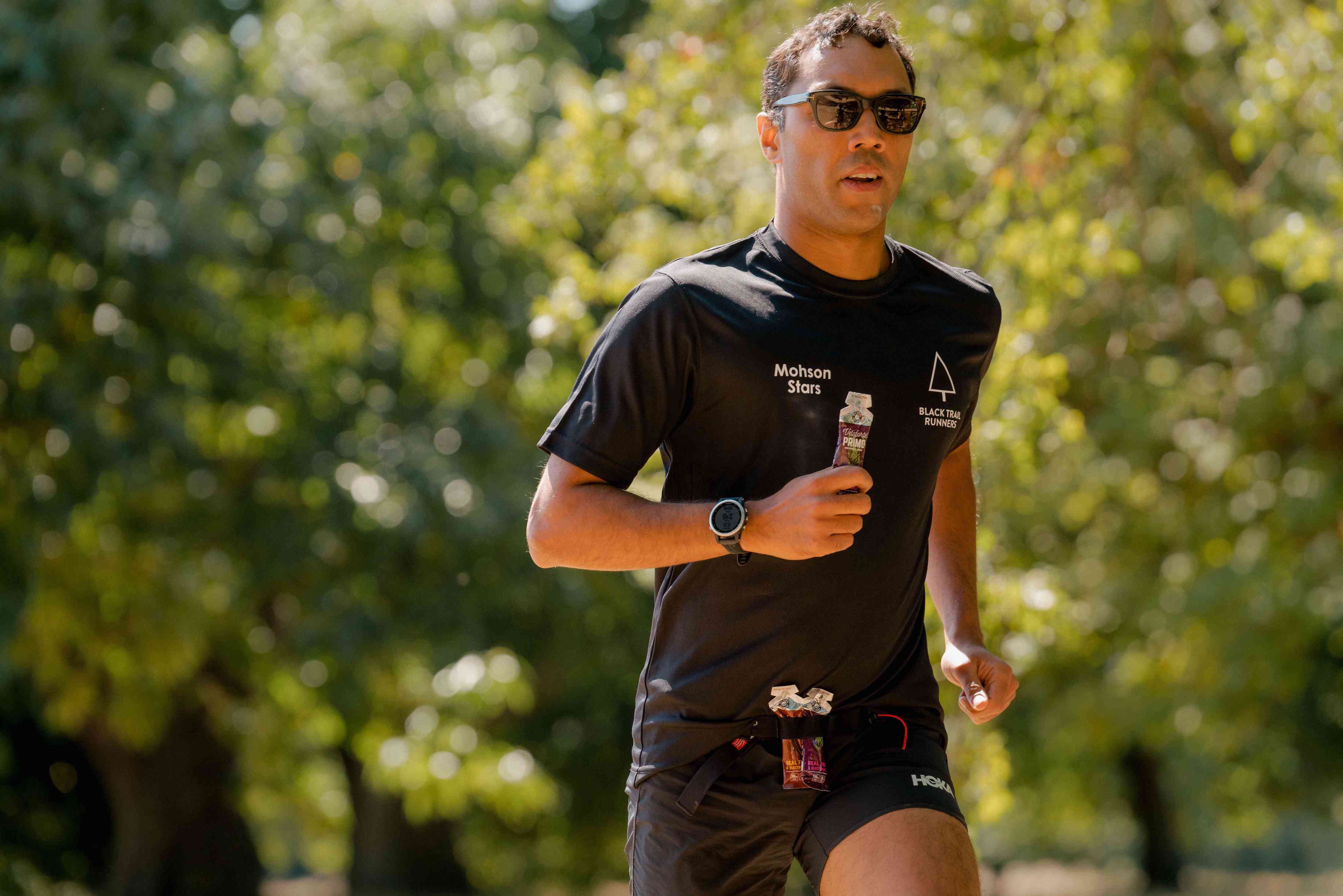Home>Misc>Featured>How Long Is A Long-Distance Running Race?


Featured
How Long Is A Long-Distance Running Race?
Modified: January 2, 2024
Discover the featured article on how long a long-distance running race can be. Learn about the distances and challenges involved in these endurance events.
Introduction
Long-distance running is a popular sport that has captivated the hearts and minds of people around the world. Whether it’s the sheer thrill of pushing one’s physical limits or the desire to achieve personal goals, long-distance running races offer a unique and rewarding experience. But just how long is a long-distance running race?
In this article, we will delve into the world of long-distance running and explore the various factors that determine the length of these races. We will also take a closer look at some of the most common distances for long-distance running races and highlight the marathon as the standard long-distance race. Additionally, we will discuss ultra-marathons and other long-distance running races that push the boundaries of human endurance.
So, whether you are a seasoned runner looking to delve deeper into the world of long-distance running or a curious beginner seeking to understand the allure of these races, this article will provide you with a comprehensive understanding of the lengths and types of long-distance running races.
Understanding Long-Distance Running
Long-distance running is a form of aerobic exercise that involves running over extended distances, typically beyond the traditional distances of track races like sprints or middle-distance events. Unlike shorter races, long-distance running requires endurance, mental fortitude, and strategic pacing to cover the longer distances.
Many people are drawn to long-distance running because it provides numerous physical and mental benefits. Not only does it improve cardiovascular fitness and help burn calories, but it also strengthens muscles, boosts immune function, and enhances overall stamina. Additionally, long-distance running has been linked to improved mental health, as it can reduce stress, boost mood, and increase energy levels.
When it comes to understanding long-distance running, it’s essential to differentiate between various race distances. While the exact definition may vary, races that exceed 5 kilometers (3.1 miles) are generally considered to fall into the realm of long-distance running.
Long-distance running can take place on various terrains, including roads, trails, and tracks, offering runners the opportunity to explore new environments and challenge themselves in different ways. It is a sport that welcomes individuals of all ages and fitness levels, providing a community that encourages camaraderie and personal growth.
Training for long-distance running involves a combination of endurance runs, speed workouts, strength training, and proper nutrition. Runners typically follow training plans tailored to their goals and fitness levels to gradually build their mileage and endurance over time.
Understanding the physical and mental demands of long-distance running is crucial to successfully participating in and completing these races. It requires discipline, perseverance, and the ability to push through physical and mental barriers. However, the sense of accomplishment and the feeling of crossing the finish line after a long and challenging race far outweigh the difficulties encountered along the way.
Factors That Determine the Length of a Long-Distance Race
When it comes to long-distance running races, several factors come into play in determining their length. These factors can vary depending on the race organizers, location, and type of event. Let’s explore some of the key factors that influence the distance of a long-distance race.
1. Race Distance Tradition: Many long-distance races have established distances that are considered traditional or standard. For example, the marathon, which is 26.2 miles (42.195 kilometers), has been the standard distance for over a century. These traditional race distances often hold historical significance and have become widely recognized benchmarks for long-distance running.
2. Organizational Preference: Race organizers have the flexibility to choose their desired race distances, which can be influenced by various factors such as the available course route, local regulations, and logistical considerations. Some race organizers may opt for slightly longer or shorter distances to accommodate specific preferences or requirements.
3. Course Route: The characteristics of the course route, including its topography and terrain, can significantly impact the chosen race distance. Hilly or mountainous routes may result in shorter distances due to the increased challenge they pose, while flat and fast routes can accommodate longer distances.
4. Target Audience: The target audience of a race can influence the chosen distance. Some races cater to beginner runners or those looking for a shorter challenge, offering distances like 5 kilometers (3.1 miles) or 10 kilometers (6.2 miles). On the other hand, endurance-focused races specifically target experienced runners seeking longer distances like half-marathons or full marathons.
5. Time Constraint: Races are often scheduled to fit within a specific time frame, such as a day or a weekend. Race lengths may be adjusted to allow for multiple races to take place within the allocated time, offering participants a range of distances and challenges.
6. Type of Race: Different types of long-distance running races exist, each with its own specific distances. For example, ultra-marathons, which are races longer than the traditional marathon distance, can range from 50 kilometers (31.1 miles) to several hundred miles. Trail running events may have varying distances based on the difficulty of the terrain.
Evaluating these factors helps race organizers create diverse long-distance running events that cater to a wide range of participants, from novice runners to experienced endurance athletes. It enables runners to choose races that align with their fitness levels, goals, and personal preferences.
Common Distances for Long-Distance Running Races
Long-distance running races encompass a wide range of distances, providing opportunities for runners of all skill levels to challenge themselves and achieve their goals. Let’s take a closer look at some of the most common distances for long-distance running races:
1. 5 kilometers (3.1 miles): The 5K race is a popular choice for beginners and seasoned runners alike. It’s a manageable distance that allows participants to test their speed and endurance without the physical demands of longer races. Many charity runs and community events feature the 5K as a fun and inclusive race option.
2. 10 kilometers (6.2 miles): The 10K race is another popular choice for runners looking to progress from the 5K distance. It offers a slightly more challenging challenge and allows participants to improve their stamina and pacing strategies. The 10K can be a stepping stone towards longer races or a standalone event for those seeking a moderate distance.
3. Half-Marathon (21.1 kilometers or 13.1 miles): The half-marathon is a significant milestone for many runners. It requires a balance of endurance and speed to complete the 13.1 miles. Half-marathons attract a wide range of participants, from casual runners aiming to conquer their first long-distance race to seasoned athletes seeking to improve their personal best times.
4. Marathon (42.195 kilometers or 26.2 miles): The marathon is the quintessential long-distance running race and holds a special place in the running community. It represents the ultimate test of endurance and mental resilience. Training for a marathon requires months of dedicated preparation and commitment. Crossing the finish line of a marathon is a remarkable achievement that leaves runners with an indescribable sense of accomplishment.
These distances provide a foundation upon which many long-distance runners build their racing careers. However, it’s important to note that there are numerous other race distances available, catering to various preferences and abilities. Some events offer unconventional distances, such as 15K, 25K, or 30K, to provide unique challenges and opportunities for runners to push their limits.
Long-distance running races cater to individuals at different stages of their running journey, whether they are just starting or have years of experience. They offer a chance to set goals, track progress, and experience the joy of crossing the finish line, regardless of the specific distance.
Marathon as the Standard Long-Distance Race
When it comes to long-distance running, the marathon stands as the epitome of endurance and human achievement. With a distance of 42.195 kilometers (26.2 miles), the marathon represents the standard long-distance race that both elite athletes and recreational runners aspire to conquer.
The origins of the marathon date back to ancient Greece, where legend has it that a messenger ran from the town of Marathon to Athens to deliver news of a military victory. This historical event provided the inspiration for the creation of the modern-day marathon race.
Participating in a marathon is not a decision to be taken lightly. It requires months of focused training, dedication, and mental preparation. Runners gradually build up their endurance and mileage over time, following structured training plans designed to prepare them for the challenges of the race.
The marathon distance presents a unique set of physical and mental hurdles. Runners must pace themselves strategically, managing their energy and mental focus to endure the distance. The race provides a platform for personal growth, pushing participants to their limits and teaching valuable lessons of resilience, determination, and self-belief.
Marathons are held all over the world, attracting runners from different backgrounds and cultures. Major marathons like the Boston Marathon, London Marathon, and New York City Marathon are renowned for their rich history, large-scale participation, and vibrant race-day atmosphere.
In recent years, there has been an increase in the popularity of marathons as charity and fundraising events. Many runners use the marathon platform to raise money for worthy causes, further adding to the significance and impact of these races.
Completing a marathon is an incredible accomplishment that leaves a lasting impression on both the runner and the surrounding community. The sense of achievement, crossing the finish line after such a monumental effort, is unparalleled. Runners often describe it as a life-changing experience, boosting their self-confidence, fostering a sense of accomplishment, and igniting a passion for future running challenges.
The marathon remains the ultimate goal for many long-distance runners. It represents a journey of personal growth, determination, and triumph. Whether it’s an individual’s first marathon or the continuation of a long-standing tradition, the race holds a special place in the hearts of runners around the world.
Ultra-Marathons: Pushing the Limits of Long-Distance Running
For those seeking to push beyond the traditional marathon distance, ultra-marathons offer an extraordinary challenge. Ultra-marathons are long-distance running races that exceed the 42.195-kilometer (26.2-mile) mark, pushing the boundaries of human endurance and testing the limits of physical and mental strength.
Ultra-marathons come in various forms, ranging from 50 kilometers (31.1 miles) to several hundred miles. These races are often held in remote and rugged terrains, including mountains, deserts, and trails, providing a unique and breathtaking experience for participants.
One of the most well-known ultra-marathons is the Western States 100-Mile Endurance Run. This iconic race takes place annually in California’s Sierra Nevada mountains and challenges runners with steep climbs, technical trails, and extreme weather conditions.
Training for an ultra-marathon requires a substantial increase in both mileage and time commitment compared to marathon training. Runners gradually build their endurance and practice long runs, back-to-back training sessions, and mental readiness to handle the physical and mental demands of the race.
Ultra-marathons demand not only physical fitness but also a strong mindset. Participants face fatigue, pain, and moments of doubt throughout the race. Mental resilience and determination play a crucial role in overcoming these challenges and pushing forward toward the ultimate goal of reaching the finish line.
Ultra-marathons are more than just a race; they are a journey of self-discovery and personal growth. Runners find strength they never knew they had and tap into a deep well of determination. The ultra-running community is known for its camaraderie and support, creating a unique atmosphere where runners uplift and inspire each other to keep moving forward.
Ultra-marathons can be physically grueling, but they can also be incredibly rewarding. The sense of accomplishment upon completing an ultra-marathon is unparalleled. Runners often cite the mental and emotional transformation that takes place during the race as one of the most profound experiences of their lives.
Ultra-marathons provide an escape from the ordinary, a chance to explore the limits of human potential, and an opportunity to connect with nature in untouched and breathtaking landscapes. They attract individuals who are willing to step outside their comfort zones and embrace the unknown in pursuit of adventure, self-discovery, and personal triumph.
While ultra-marathons may not be for everyone, they serve as a testament to the indomitable spirit of long-distance runners and their ability to push beyond perceived boundaries. These races inspire and captivate the running community and continue to redefine what is possible in the realm of long-distance running.
Other Long-Distance Running Races and Distances
While marathons and ultra-marathons are widely recognized as the pinnacle of long-distance running, there are numerous other races and distances that offer unique challenges and opportunities for runners. Let’s explore some of the lesser-known long-distance running races:
1. 50-Mile Races: These races bridge the gap between marathons and ultra-marathons. With a distance of 50 miles, they test runners’ endurance and mental fortitude. 50-mile races often take place on diverse terrains, including trails and mountains, offering a demanding and exhilarating race experience.
2. 100K Races: 100-kilometer races are another step up from the marathon distance. Covering approximately 62 miles, these races push runners to dig deep and maintain a steady pace over an extended period. 100K races often attract experienced ultra-runners looking for a new challenge or a stepping stone to even longer distances.
3. 24-Hour Races: In 24-hour races, participants strive to cover as much distance as possible within the given time frame. Runners continuously loop around a course, accumulating mileage throughout the day and night. These races require both physical endurance and mental stamina, as runners must sustain a steady pace for the duration of the event.
4. Self-Supported Races: Self-supported long-distance races, also known as stage races, require runners to carry their own food, water, and mandatory gear throughout the entire race. These multi-day events often span rugged terrains and remote locations, adding an extra level of challenge and self-sufficiency for participants.
5. Backyard Ultra Races: Backyard ultras are unique long-distance races inspired by the famous Big’s Backyard Ultra. Runners must complete a 4.16-mile loop within a set time limit and continue to do so until they are the last person standing. Each loop starts at the top of the hour, creating a unique mental and physical challenge as the clock ticks on for potentially endless hours.
These alternative long-distance races provide a wealth of options for runners looking to venture beyond the traditional marathon or ultra-marathon distances. Each race presents its own set of physical and mental obstacles, attracting runners who seek variety, adventure, and unconventional challenges.
Regardless of the specific distance or format, long-distance running races serve as platforms for personal growth, inspiration, and the forging of lifelong connections within the running community. They offer a chance to discover untapped potential, push beyond limits, and make memories that will stay with runners for a lifetime.
Conclusion
Long-distance running races capture the essence of perseverance, endurance, and the human spirit. From the traditional marathon to the ultramarathon and other unique races, each distance offers its own set of challenges and rewards. These races provide a platform for personal growth, pushing individuals to go beyond their limits and achieve remarkable feats.
Whether it’s the thrill of competing against others, the desire to achieve personal goals, or the opportunity to give back through charity and fundraising, long-distance running races have a way of bringing people together. They create a sense of community and camaraderie among runners that is truly special.
Understanding the factors that determine the length of a long-distance race helps us appreciate the diversity and range of options available. From shorter races like 5Ks and 10Ks to the iconic marathon and the unparalleled challenges of ultra-marathons, there is something for everyone in the world of long-distance running.
Long-distance running provides numerous physical and mental benefits, including improved cardiovascular fitness, increased stamina, and stress reduction. It requires discipline, dedication, and a resilient mindset to conquer the distances and overcome the inevitable highs and lows that come with any race.
As runners lace up their shoes and take on the challenge of a long-distance race, they embark on a journey of self-discovery, personal growth, and unforgettable experiences. Crossing the finish line, whether in a marathon, ultra-marathon, or any other long-distance race, is a moment of triumph that leaves runners with a lasting sense of accomplishment and pride.
Long-distance running races provide a platform for individuals to set goals, push their limits, and embrace the adventure that lies ahead. They connect people from all walks of life, fostering a sense of unity and shared passion.
So, whether you are a novice runner seeking your first 5K race, an experienced marathoner aiming for a personal best, or an ultra-runner ready to tackle new challenges, the world of long-distance running offers a multitude of races and distances to explore. Embrace the journey, embrace the challenge, and discover the incredible rewards that long-distance running can bring.









